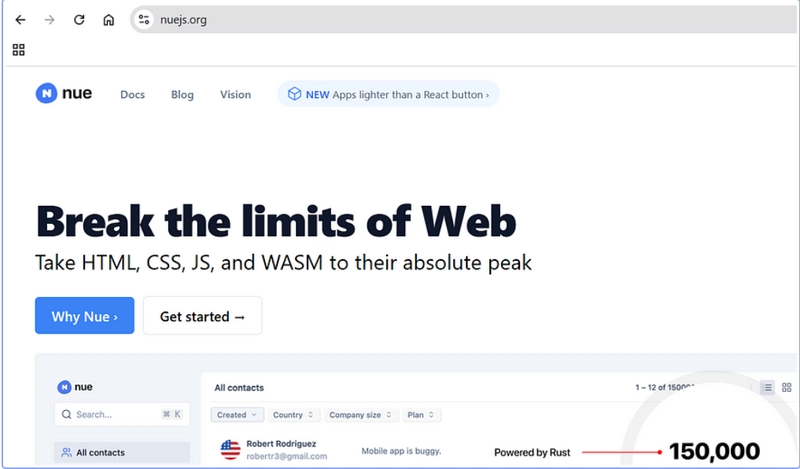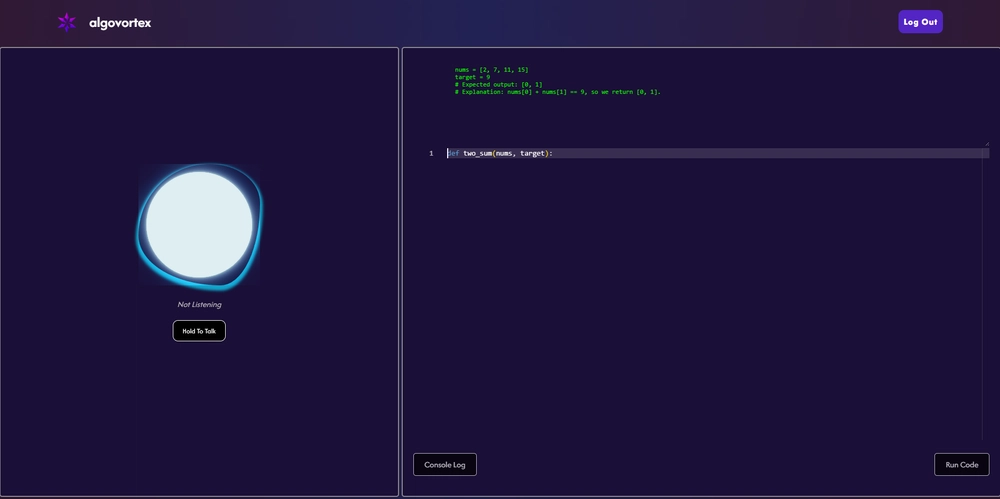How to Use TOSCA Automation Tool for Testing: A Beginner’s Guide (2025)
Introduction In today’s fast-paced software development landscape, automation testing is a crucial component of maintaining quality and efficiency. TOSCA Automation Tool, developed by Tricentis, has emerged as one of the most powerful tools for test automation. With its robust capabilities and comprehensive feature set, TOSCA empowers testers to automate even the most complex testing scenarios. Whether you’re new to automation testing or aiming to upskill with TOSCA, this guide will walk you through everything you need to know about the TOSCA Automation Tool in 2025. From understanding the basics to mastering advanced features, this guide will equip you with practical knowledge and hands-on experience. Enroll in TOSCA Automation Tool Training today and become proficient in using this tool for your testing needs. Obtaining a TOSCA Certification can significantly boost your career prospects, and getting a TOSCA Training License is the first step toward mastering this tool. What is TOSCA Automation? TOSCA (Topological Scanner and Architecture) is a comprehensive automation testing tool developed by Tricentis. It enables testers to automate end-to-end testing processes, from test case design to execution and reporting. TOSCA’s model-based approach to testing makes it easy to create, manage, and maintain test cases without extensive programming knowledge. Key Features of TOSCA Model-Based Test Automation: TOSCA revolutionizes the way test cases are created by leveraging a model-based approach, significantly streamlining the entire test automation process. This innovative methodology allows users to build, maintain, and execute test cases more efficiently. By using models to represent the application under test, TOSCA eliminates the need for repetitive scripting, thereby reducing both complexity and effort. This not only enhances productivity but also ensures that test cases remain robust and adaptable to changes in the application. Test Data Management: Efficient test data management is at the core of TOSCA’s functionality. The platform seamlessly integrates with various databases to retrieve, manage, and manipulate test data in real-time. This integration ensures that test data is always consistent, accurate, and up-to-date, minimizing the risk of data discrepancies during testing. Additionally, TOSCA’s data-driven testing capabilities enable automated test case execution using diverse datasets, thereby enhancing test coverage and accuracy. API Testing: In today’s interconnected software ecosystems, API testing is essential, and TOSCA excels in this area by providing comprehensive support for seamless API testing. This feature enables testers to validate backend functionality, ensuring that API endpoints respond correctly under various conditions. With TOSCA’s intuitive API testing capabilities, users can perform end-to-end validation and achieve thorough backend testing without the need for complex scripting, fostering high-quality software delivery. Continuous Integration: TOSCA is designed to integrate effortlessly with Continuous Integration and Continuous Deployment (CI/CD) pipelines, making it a valuable tool in modern DevOps practices. By incorporating automated build and test processes into CI/CD workflows, TOSCA helps organizations maintain a consistent testing approach while accelerating software delivery. Its robust integration capabilities enable the seamless execution of tests as part of the CI/CD pipeline, ensuring that applications are tested continuously and efficiently. Risk-Based Testing: TOSCA introduces a strategic approach to testing through its risk-based testing feature. By assessing and categorizing potential risks, it helps prioritize test cases that are crucial for identifying critical issues. This ensures that the most significant areas of the application are thoroughly tested while optimizing time and resources. TOSCA’s risk-based testing methodology aids in identifying and mitigating risks early, thereby contributing to the overall stability and reliability of the software. Cross-Platform Testing: In a diverse technological landscape, cross-platform compatibility is crucial, and TOSCA addresses this need by supporting comprehensive testing across various platforms. Whether it’s web applications, desktop software, mobile apps, or APIs, TOSCA ensures consistent and thorough testing across all environments. This versatility not only simplifies the testing process but also guarantees that the application performs optimally across different platforms and devices. Why Choose TOSCA for Automation Testing? The TOSCA Automation Tool is designed to address modern testing challenges. Here’s why TOSCA stands out among other automation tools: Benefits of Using TOSCA No Scripting Needed: TOSCA’s model-based approach eliminates the need for complex coding. Highly Scalable: Suitable for both small and large-scale projects. Efficient Maint

Introduction
In today’s fast-paced software development landscape, automation testing is a crucial component of maintaining quality and efficiency. TOSCA Automation Tool, developed by Tricentis, has emerged as one of the most powerful tools for test automation. With its robust capabilities and comprehensive feature set, TOSCA empowers testers to automate even the most complex testing scenarios.
Whether you’re new to automation testing or aiming to upskill with TOSCA, this guide will walk you through everything you need to know about the TOSCA Automation Tool in 2025. From understanding the basics to mastering advanced features, this guide will equip you with practical knowledge and hands-on experience. Enroll in TOSCA Automation Tool Training today and become proficient in using this tool for your testing needs. Obtaining a TOSCA Certification can significantly boost your career prospects, and getting a TOSCA Training License is the first step toward mastering this tool.
What is TOSCA Automation?
TOSCA (Topological Scanner and Architecture) is a comprehensive automation testing tool developed by Tricentis. It enables testers to automate end-to-end testing processes, from test case design to execution and reporting. TOSCA’s model-based approach to testing makes it easy to create, manage, and maintain test cases without extensive programming knowledge.
Key Features of TOSCA
Model-Based Test Automation:
TOSCA revolutionizes the way test cases are created by leveraging a model-based approach, significantly streamlining the entire test automation process. This innovative methodology allows users to build, maintain, and execute test cases more efficiently. By using models to represent the application under test, TOSCA eliminates the need for repetitive scripting, thereby reducing both complexity and effort. This not only enhances productivity but also ensures that test cases remain robust and adaptable to changes in the application.
Test Data Management:
Efficient test data management is at the core of TOSCA’s functionality. The platform seamlessly integrates with various databases to retrieve, manage, and manipulate test data in real-time. This integration ensures that test data is always consistent, accurate, and up-to-date, minimizing the risk of data discrepancies during testing. Additionally, TOSCA’s data-driven testing capabilities enable automated test case execution using diverse datasets, thereby enhancing test coverage and accuracy.
API Testing:
In today’s interconnected software ecosystems, API testing is essential, and TOSCA excels in this area by providing comprehensive support for seamless API testing. This feature enables testers to validate backend functionality, ensuring that API endpoints respond correctly under various conditions. With TOSCA’s intuitive API testing capabilities, users can perform end-to-end validation and achieve thorough backend testing without the need for complex scripting, fostering high-quality software delivery.
Continuous Integration:
TOSCA is designed to integrate effortlessly with Continuous Integration and Continuous Deployment (CI/CD) pipelines, making it a valuable tool in modern DevOps practices. By incorporating automated build and test processes into CI/CD workflows, TOSCA helps organizations maintain a consistent testing approach while accelerating software delivery. Its robust integration capabilities enable the seamless execution of tests as part of the CI/CD pipeline, ensuring that applications are tested continuously and efficiently.
Risk-Based Testing:
TOSCA introduces a strategic approach to testing through its risk-based testing feature. By assessing and categorizing potential risks, it helps prioritize test cases that are crucial for identifying critical issues. This ensures that the most significant areas of the application are thoroughly tested while optimizing time and resources. TOSCA’s risk-based testing methodology aids in identifying and mitigating risks early, thereby contributing to the overall stability and reliability of the software.
Cross-Platform Testing:
In a diverse technological landscape, cross-platform compatibility is crucial, and TOSCA addresses this need by supporting comprehensive testing across various platforms. Whether it’s web applications, desktop software, mobile apps, or APIs, TOSCA ensures consistent and thorough testing across all environments. This versatility not only simplifies the testing process but also guarantees that the application performs optimally across different platforms and devices.
Why Choose TOSCA for Automation Testing?
The TOSCA Automation Tool is designed to address modern testing challenges. Here’s why TOSCA stands out among other automation tools:
Benefits of Using TOSCA
No Scripting Needed: TOSCA’s model-based approach eliminates the need for complex coding.
Highly Scalable: Suitable for both small and large-scale projects.
Efficient Maintenance: Reduces test maintenance through modular test cases.
Seamless Integration: Easily integrates with popular CI/CD tools.
Robust Reporting: Generates comprehensive and detailed test reports.
How to Get Started with TOSCA Automation Tool
Getting started with TOSCA is simpler than you might think. Follow these steps to set up and begin automating your testing processes.
Step 1: Install TOSCA
To get started, download the TOSCA Automation Tool from the Tricentis website. You will need a TOSCA Training License to access the full features. Follow the installation instructions to complete the setup.
Step 2: Create a Workspace
Once installed, open TOSCA Commander and create a new workspace. This workspace will serve as your testing project hub.
Step 3: Design Your Test Cases
TOSCA’s model-based approach makes designing test cases intuitive. Define your test requirements and map them using TOSCA’s test case templates.
Step 4: Execute Your Tests
After designing your test cases, execute them directly from TOSCA Commander. Monitor the execution status and analyze the results in real time.
Step 5: Generate Reports
TOSCA provides various reporting features to document your testing outcomes. Export reports for stakeholders to review the testing progress and outcomes.
Advanced TOSCA Features
As you progress with TOSCA, it’s essential to explore its advanced features to fully utilize its potential.
API Testing
TOSCA allows for seamless API testing by integrating with REST and SOAP services. This capability ensures that backend services function as expected.
**
Data-Driven Testing**
Leverage TOSCA’s data-driven testing capabilities to execute test cases with multiple data sets, improving test coverage.
Risk-Based Testing
Identify critical areas to focus your testing efforts and reduce time spent on low-risk components.
Best Practices for TOSCA Automation
To maximize the efficiency and effectiveness of TOSCA automation, follow these best practices:
Organize Your Test Cases: Group related test cases logically to enhance maintainability.
Leverage Test Data Management: Store and retrieve test data effectively to minimize redundancy.
Automate Repetitive Tasks: Use TOSCA’s scriptless automation to streamline repetitive testing activities.
Regularly Update Test Scripts: Keep your test cases up-to-date to accommodate new software changes.
Real-World Applications of TOSCA
TOSCA is widely used in various industries, including finance, healthcare, and e-commerce. One notable case study is how a leading financial firm reduced its testing time by 50% by implementing TOSCA’s model-based testing.
Common Challenges and Solutions
While TOSCA simplifies automation testing, you may encounter challenges like configuration issues or complex integrations. Addressing these challenges requires a thorough understanding of TOSCA’s features and careful planning.
Conclusion
Mastering TOSCA Automation requires dedication and consistent practice. By following this beginner’s guide, you will gain a solid foundation and the confidence to handle real-world testing scenarios. Whether you are pursuing TOSCA Certification or simply aiming to enhance your skills, enrolling in TOSCA Automation Tool Training will accelerate your learning curve. Obtain your TOSCA Training License and unlock the full potential of this powerful tool. Start automating today to advance your testing career!
Key Takeaways
TOSCA is a versatile automation tool that supports various testing scenarios.
The tool’s model-based approach makes it beginner-friendly and efficient.
Real-world applications demonstrate TOSCA’s effectiveness in reducing testing time.
Obtaining TOSCA Certification enhances career prospects.
Take the first step towards becoming a TOSCA Automation expert by enrolling in a comprehensive training program today!











































































































































































![[The AI Show Episode 142]: ChatGPT’s New Image Generator, Studio Ghibli Craze and Backlash, Gemini 2.5, OpenAI Academy, 4o Updates, Vibe Marketing & xAI Acquires X](https://www.marketingaiinstitute.com/hubfs/ep%20142%20cover.png)




























































































































![[DEALS] The Premium Learn to Code Certification Bundle (97% off) & Other Deals Up To 98% Off – Offers End Soon!](https://www.javacodegeeks.com/wp-content/uploads/2012/12/jcg-logo.jpg)


![From drop-out to software architect with Jason Lengstorf [Podcast #167]](https://cdn.hashnode.com/res/hashnode/image/upload/v1743796461357/f3d19cd7-e6f5-4d7c-8bfc-eb974bc8da68.png?#)








































































































.png?#)


































_Christophe_Coat_Alamy.jpg?#)
.webp?#)
 (1).webp?#)






































































































![Apple Considers Delaying Smart Home Hub Until 2026 [Gurman]](https://www.iclarified.com/images/news/96946/96946/96946-640.jpg)
![iPhone 17 Pro Won't Feature Two-Toned Back [Gurman]](https://www.iclarified.com/images/news/96944/96944/96944-640.jpg)
![Tariffs Threaten Apple's $999 iPhone Price Point in the U.S. [Gurman]](https://www.iclarified.com/images/news/96943/96943/96943-640.jpg)

































































































































